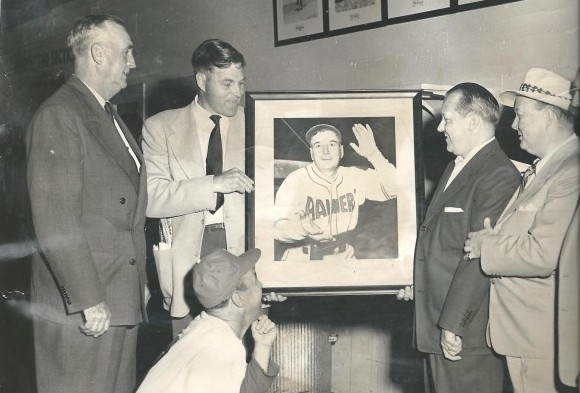
On Aug. 12, 1954, a few minutes past 9 p.m., the Seattle Rainiers turned back the clock by about a decade and a half between games of a Thursday night doubleheader with the Oakland Oaks at Sicks Stadium.
The lights on the stanchions atop the grandstand roof grew dim, and a powerful spotlight moved from a spot behind home plate toward the third-base coaching box, coming to rest on a uniform top mounted on a tripod. The jersey bore the numeral 1. The last man to wear it had been Jack Lelivelt, architect and manager of the franchises most successful teams (1938-41).
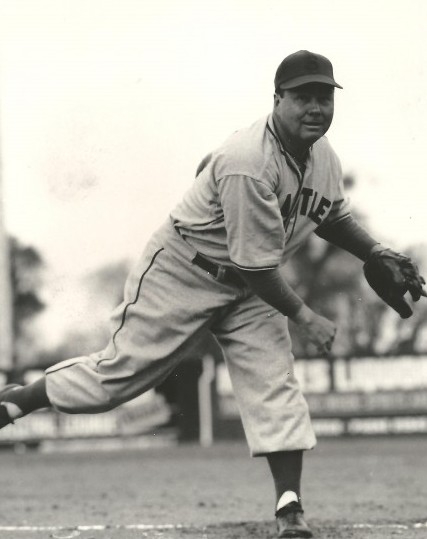
Shortly after a band played Auld Lang Syne, master of ceremonies Bill OMara began describing the careers of the five former Rainiers players unable to attend the teams Roll of Honor ceremony, and reading telegrams sent by them, expressing their appreciation to the 3,713 customers in attendance.
The most famous of the absentees, one-time star pitcher Fred Hutchinson, couldnt make the festivities, occupied as he was managing the Detroit Tigers. Outfielder Jim Rivera also had conflicting business, manning center field for the Chicago White Sox.
Former outfielder Joyner (Jo-Jo) White, long retired as a player, was off in the Midwest, managing the Keokuk Kernels, a Cleveland Indians affiliate in the Class B Illinois-Indiana-Iowa League. Illness reportedly prevented former outfielder Bill Lawrence from attending and, of course, Lelivelt was deceased.
The six ex-Rainiers at Sicks’ Stadium that night had all come from the same era in franchise history, the years bracketing 1940, which were those most vividly remembered by fans. Only one link existed between those days and Aug. 12, 1954: Bill Schuster, then a shortstop, was now a coach.
After the absentees had been saluted, an even older relic of Seattles baseball past, Seattle Bill James, winner of 26 games for the 1912 Seattle Giants, presented trophies to the six Roll of Honor inductees in attendance: Kewpie Dick Barrett, Dick Gyselman, Arthur Mike Hunt, Hal Turpin, Alan Strange and Schuster.
Asked to select the 11 greatest Rainiers (10 players and one manager), fans tapped the cherubic Barrett as the most popular player by a 174-vote margin over Lawrence. Lelivelt overwhelmed Rogers Hornsby in manager balloting.
The Roll of Honor was as notable for who made it as who did not. Close behind, but failing to make the cut, were Jim Wilson (1950), George Archie (1939-40), Walt Judnich (1950-53) and Edo Vanni (1938-48, ’50).
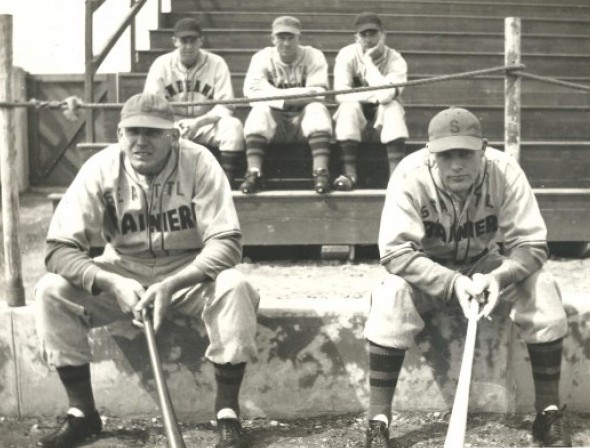
Of the 10 selected, eight spent time in the major leagues, either before or after their stints with the Rainiers. Hutchinson, who retired as an active player the year before the ROH ceremony, logged 10 years. Rivera, a third-year major leaguer at the time of the ceremony, would also have a 10-year MLB run. At the other end of the spectrum, Lawrence’s MLB experience amounted to a 25-game cup of coffee.
Three ROH inductees, Hutchinson,White and Rivera, played (or would play) in a World Series. One, Hutchinson, had been a major league All-Star.
Four — Barrett, Lawrence, Gyselman and Turpin — spent at least 10 years in a Seattle uniform. Two, Hutchinson (1938) and Rivera (1951), made the ROH having spent just one season with the club.
The seven ROH hitters Lawrence, White, Rivera, Gyselman, Hunt, Strange and Schuster combined for 14 .300 batting seasons in Seattle, as well as seven 200-hit seasons. The three pitchers — Barrett (7), Turpin (4) and Hutchinson (1)– collaborated for 12 20-win seasons.
Four ROH members managed the Rainiers, either before or after Aug. 12, 1954: White (1946-49), Lawrence (1949), Hutchinson (1955, 59), Strange (1959).
Two — Turpin (93) and Lawrence (91) lived into their 90s, and three others — Hunt (89), Strange (87) and Gyselman (82) saw their 80s. Only Hutchinson (45), claimed by cancer, died young.
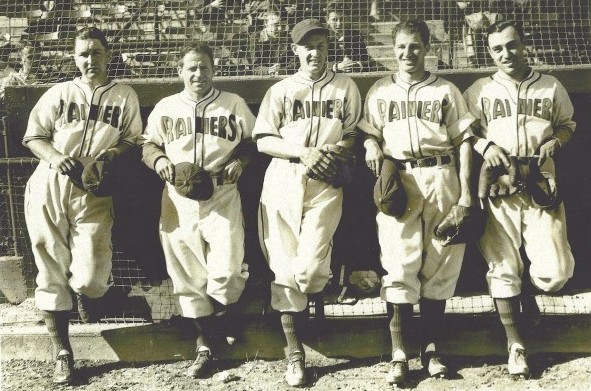
The Rainiers Roll of Honor, by vote:
1. DICK BARRETT, RHP, 1935-42, 1947-49, 7,136 votes
No surprise that fans elected Kewpie Dick the most popular Rainiers player. Starting in 1935, Barrett spent 11 seasons in a Seattle uniform, amassing a record of success unmatched by any other pitcher in franchise history (194 victories).
The Rainiers acquired Barrett on Nov. 24, 1934, along with Gyselman and Clarence Pickrel, from the Boston Braves in exchange for third baseman Coffee Joe Coscarart. A pro since 1925, Barrett decamped in the Queen City with a major league record of 5-7 and an ERA of 5.78 in 30 appearances, including 10 starts.
In his years in the minors (and majors) Barrett put together just one outstanding season, a 20-9 record for Class B Binghamton in the New York-Penn League in 1928. Otherwise, he had been a .500 pitcher of little distinction.
Barrett is just a guess, wrote the Seattle Times when it reported the trade. But he is supposed to be a smart chap with the ability to win in the Coast League.
Barrett created much angst by starting the 1935 season 0-6, but went 22-7 the rest of the way for an Indians team that finished 80-93.
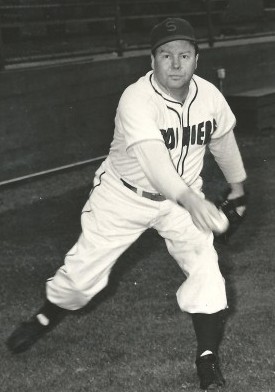
With that prelude, Kewpie Dick won 20 or more games in seven of his first eight years, topped by a 24-5 record in 1940, when the Rainiers won the second of three consecutive pennants, and a 27-13 (1.72 ERA) mark in 1942, the year The Sporting News named him the Minor League Player of the Year.
Kewpie’s most audacious moment occurred on May 16, 1948, when, at age 41, he became the second pitcher in PCL history to throw a perfect game, blanking the Sacramento Solons 3-0.
Kewpies competitiveness most endeared him to Seattle fans. He always wanted the ball and frequently threw both ends of a doubleheader. By the time he departed the Rainiers in 1949, he had become one of 14 pitchers in PCL history to throw two complete-game shutouts in one day.
Barrett died on Oct. 30, 1966, in Seattle at the age of 60.
2. BILL LAWRENCE, OF, 1929-31, 1934-43, 6,926 votes
Had Lawrence not spent 4 ½ years patrolling center field at rock-hard Civic Stadium, a punishing experience on his legs, he might have been able to add considerably to the nearly 1,500 games he logged on behalf of the Seattle Indians/Rainiers.
The 6-4, 195-pound Lawrence, nicknamed Highpockets, joined the franchise in 1929 (they were then known as the Indians) after a short stint with the San Francisco Seals and haunted local ballparks for all or parts of 13 seasons. He posted a career batting average of .289 and drove in 750 runs (742 for Seattle) in 1,613 PCL games.
Lawrence, who played on three consecutive PCL champions in Seattle (1939-41), hit .300 or higher four times and had his best year in 1935 when he batted .319 with 194 hits in 166 games.
He never was a home run guy (32 in 15 minor league seasons), but he had a reputation as a clutch hitter. He also became the first player to hit balls over the left- and right-field fences at Sicks Stadium, which the Rainiers first occupied in June of 1938.
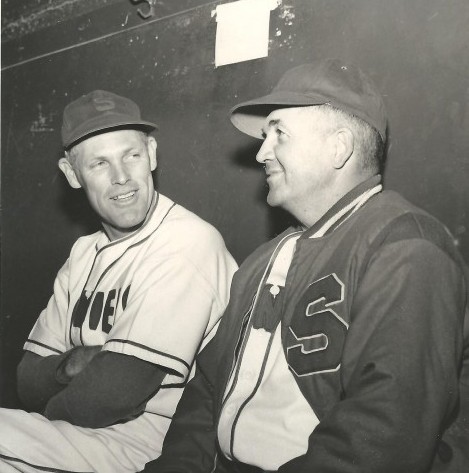
He was the best center fielder I ever saw in the minors, former teammate Vanni told the Seattle Post-Intelligencer, adding that Lawrence had a quick jump, long, loping strides that made difficult catches look easy, and a remarkable ability to run the bases.
“He’d take strides you couldn’t believe going from first to third,” Vanni said. “He could have been a great hitter, but he just didn’t have that incentive. If he got a couple of hits and we’ve got a three-run lead, he’d come back and tell the pitcher, `That’s enough. You hold the lead.’ ”
Lawrence had one major-league fling. After hitting .324 and driving in 99 runs for the 1931 Seattle Indians, he was sold to the Detroit Tigers. But he hit only .217 in 25 games (shortest MLB stint of any member of the Roll of Honor) and was sent to Toronto of the International League, where he remained through 1933.
Lawrence returned to the PCL in 1934 with Portland, was dealt to Seattle in late May that year and stayed with the Rainiers until he retired in 1943.
A native of San Mateo, CA., Lawrence scouted for the Boston Braves after his retirement. He returned to Seattle in 1949 as a coach under former teammate Jo Jo White and managed the club for the last half of the season after the club let White.
Lawrence died on June 15, 1997, in Redwood City, CA., at the age of 91.
3. JOYNER JO-JO WHITE, OF, 1939-42, 1946-48, 6,652 votes
Had the Detroit Tigers not become infatuated with Fred Hutchinson following his 25-7, 2.48 masterpiece in 1938, White might never have experienced the splendors of the Pacific Northwest. But the Tigers coveted the 19-year-old Hutchinson so much that they were willing to part with four players and $50,000 to acquire him.
White, one of the four players sent to Seattle to complete the trade, spent seven seasons (1932-38) in Detroit, serving as the club’s starting center fielder on teams that won back-to-back American League pennants in 1934-35.
White had a nice major league portfolio. In 1934, his best statistical year, he hit .313, scored 97 runs and stole 28 bases, second most in the AL. White participated in all seven games of the 1934 World Series, walking eight times and scoring six runs against the St. Louis Cardinals Gashouse Gang.
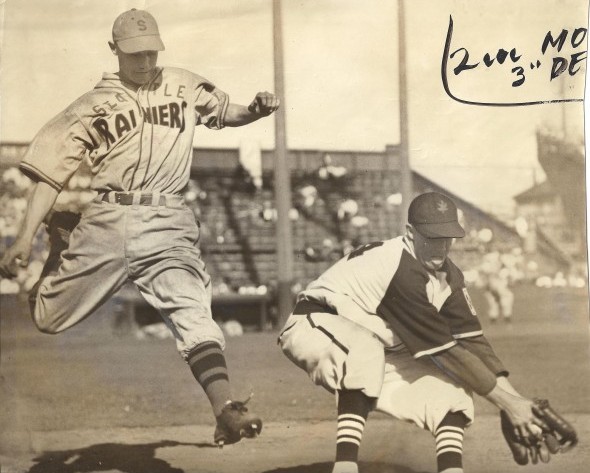
A .264 hitter with the Tigers (and a five-year roommate with Hall of Famer Hank Greenberg), White lost his starting job in 1936 when his bat speed began to ebb, making him expendable in Detroit and available to Seattle.
White had two stints with the Rainiers, from 1939-42, and from 1947 through the first half of 1949. He played an integral part on three consecutive PCL championship teams (1939-41) and had his best batting year in 1942, when he delivered a .297 average with 175 hits, 69 RBIs and 27 stolen bases in 166 games.
That season helped punch Whites ticket back to the majors (a depletion of major league talent due to World War II aided his return). Following the season, the Philadelphia Athletics purchased his contract.
In 1943, White played in more games (139) and had more hits (124) than in any season of his MLB career. After drawing action in 85 games for the Athletics in 1944, he was traded to the Cincinnati Reds. Whites time in the majors ended after 24 games with them.
White, whose son, Mike played for Seattle’s last PCL pennant-winning team (1966 Angels), returned to the PCL with Sacramento in 1945 and re-joined the Rainiers in 1946 as a player-manager.
White died on Oct. 9, 1986, at age 77 in Tacoma.
4. FRED HUTCHINSON, RHP, 1938, 5,570 votes
On Dec. 24, 1999, on the eve of the new millennium, the Seattle Post-Intelligencer named Hutchinson the city’s Athlete of the 20th Century, an eye-popping selection considering that Hutchinson had spent less than three years playing or managing in Seattle.
In selecting Hutchinson, over Ken Griffey Jr., P-I reporter Dan Raley wrote, No local athlete has been more revered than Hutch. Hutchinson was a leader, and there was never a question. He led people to championships . . . He led us to tears, sharing his own struggle with cancer in a very public and heroic manner.”
In the one season (1938) that Hutchinson wore a Rainiers uniform, he pitched in 35 games (34 starts), but made them so memorable that by the time the Rainiers sold him to Detroit, he had practically achieved iconic status.
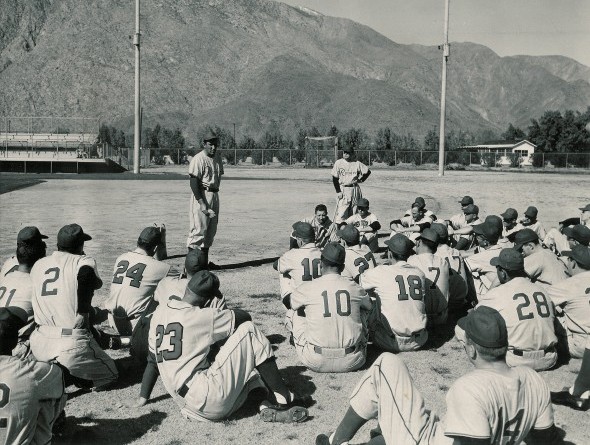
Hutchinson went 25-7 with 29 complete games in those 35 appearances with a 2.48 ERA, work that resulted in his being named Minor League Player of the Year by The Sporting News.
Rainiers fans talked for years about two of Hutchinsons performances. The first occurred on Aug. 12, 1938, Hutchinsons 19th birthday. That day, a record crowd of 16,354 arrived at Sicks Stadium hoping to watch Hutchinson record his 19th victory of the season. After allowing a leadoff single to Dom DiMaggio, Hutchinson used the next hour and 55 minutes to complete a five-hitter and a 3-2 victory.
Five days later, Hutchinson toss his second talker, recording his 20th victory in a 9-0 win over Sacramento. Hutchinson not only struck out a dozen, he went 3-for-3 at the plate with a home run and four RBIs.
Hutchinson logged more time in the major leagues 10 years, all with Detroit — than any pitcher named to the Roll of Honor. He did not become a dominant MLB pitcher, but won 15 or more games three times (18 wins in 1947) and finished with a career record of 95-71 (.572). He pitched in the 1940 World Series and 1951 All-Star game.
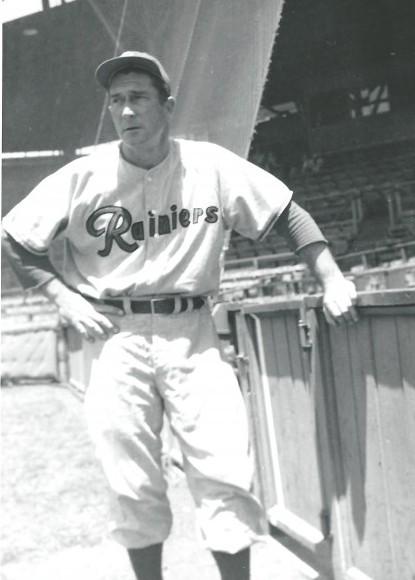
With the Tigers, he threw three two-hitters and fanned a career-high 11 on Sept. 24, 1946 against the St. Louis Browns at Briggs Stadium (whiffed Seattle native Jeff Heath twice).
Hutchinson was manager of the Tigers from 1952-54. In 1955, he made a grand return to Seattle and managed the Rainiers to the pennant, their first since 1951.
Hutchinson returned to the majors and managed the St. Louis Cardinals for three seasons (named National League Manager of the Year in 1957).
Hutchinson returned to the Rainiers again in 1959, but managed just half a season before taking over the Cincinnati Reds. ROH member Alan Strange took over for Hutchinson when he departed for Cincinnati. Hutchinsons Reds reached the 1961 World Series (lost in five games).
Hutchinson produced three more winning seasons in Cincinnati, coming within one game of claiming the pennant in 1964, his final year. He finished with a managerial record of 830-827 lifetime.
A few months after Hutchinsons death (Nov. 12, 1964 at age 45) from cancer, Sport Magazine named him its 1964 Man of the Year. Soon thereafter, sports writers created the Hutch Award in his honor, a prize that recognizes perseverance in the face of adversity.
5. JUNGLE JIM RIVERA, OF, 1951, 1962-63, 4,676 votes
Born to Puerto Rican immigrants in an impoverished area of New York called Spanish Harlem, Riveras late entry into professional baseball may have stemmed from his less-than-optimal childhood (he spent more than 10 years in an orphanage). Or maybe not.
Rivera joined the Army during World War II and found trouble with an Army officers daughter, who accused him of rape. A medical exam proved the young woman to be a virgin, but Rivera was convicted of attempted rape and spent more than four years in an Atlanta penitentiary before his parole in 1949.
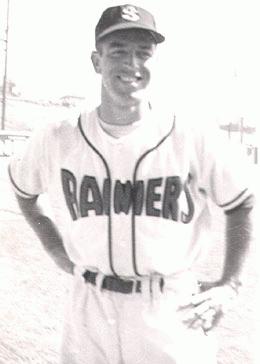
In 1959, Rivera found employment for Caguas in the Puerto Rican Winter League, which was where he developed a head-first slide that Pete Rose practically trademarked a dozen years later. While playing for Caguas, Rivera caught the eye of former major league great Rogers Hornsby, who managed a rival team.
After Hornsby became manager of the Rainiers in early 1951, he convinced the club to purchase Rivera from a minor league team in Pensacola, FL. (cost: $2,500). It became one of Hornsby’s most astute moves.
The Rainiers went 99-68 and won their first PCL title since 1942 with Rivera enjoying the best season of his pro career. He collected 231 hits, scored 135 runs, hit 20 home runs, drove in 120, won the league batting title (.352) and was named PCL Most Valuable Player.
Rainiers fans became smitten with Rivera — for his speed in the outfield, daring on the basepaths and huge arm. Hornsby, who could be notoriously critical of players, would later describe Rivera as the only man I would pay admission to see.
The White Sox purchased Rivera from the Rainiers on July 23, 1951 for $65,000, instructing him to report at the end of the PCL season. A few months later (Nov. 27), Hornsby, having been hired away from Seattle by Bill Veeck to manage his St. Louis Browns, convinced Veeck to trade for Rivera.
Rivera didnt make his MLB debut until April 15, 1952 and got into 92 games before the Browns swapped him back to the White Sox. Just before the end of the regular season, in which Rivera hit .253 with seven homers and 21 strolen bases, he got in trouble again when police arrested him in the White Sox clubhouse. The 22-year-old wife of an Army man charged Rivera with raping her. Rivera said that sex had been consensual.
A grand jury voted against indicting Rivera, but Commissioner Ford Frick sanctioned the outfielder. Rivera got into no more trouble, and his career blossomed. In 1953, he reached double figures in doubles, triples (his 16 led the American League) and home runs, and his 22 stolen bases ranked second in the AL behind teammate Minnie Minoso.
Rivera played with the White Sox through 1960, finishing as runnerup in AL stolen bases six times. He also appeared in the 1959 World Series, saving Game 5 with a remarkable catch.
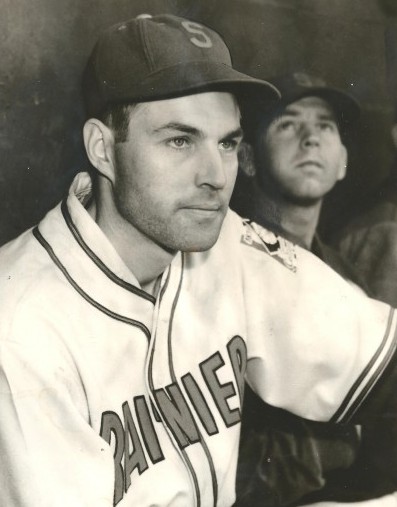
Rivera, who earned his Jungle Jim nickname from John Hoffman, a Chicago Sun-Times sports writer (for the manner in which he flapped his arms in the outfield), rejoined the Rainiers at age 39 in 1962, appearing in 69 games. He didnt have much in his tank by then. After playing in 34 games for Seattle in 1963, Rivera joined Jalisco of the Mexican League in 1964, his final year in baseball.
Id rather watch him play more than anybody else, Hornsby once told The Sporting News. He does everything to beat you. Hell beat you with his bat. Hell bunt, drag or knock the ball out of the park. Hell beat you with his outfielding and throwing, and hell steal any base most any time.
Added White Sox GM Ed Short: Jungle Jim may not have the fattest average in baseball, but he gives the fans a show with his daredevil running and sliding, his terrific fielding, and clutch hitting. His all-out style made him one of the most popular White Sox, despite his troubled and sometimes troubling history.”
6. DICK GYSELMAN, 3B, 1935-44, 47, 4,296 votes
Gyselman, aka The Needle, played in more games for the Indians/Rainiers (at least 1,714, exact number unavailable) than any member of the Roll of Honor. In fact, Gyselman wore a Seattle uniform more times than Ken Griffey Jr. (1,685).
Gyselman never put up big numbers he hit .300 or higher just three times during his tenure in Seattle, but he played 2,500 games at third base (and more than 2,600 overall), the all-time minor league record, and he played it well enough that when the Pacific Coast League named its All-Century team, covering the years 1903-57, Gyselman made it, along with Steve Bilko, 1B; Gene Mauch, 2B; Frankie Crosetti, SS; Buzz Arlett, LF; Joe DiMaggio, CF; Arnold (Jigger) Statz, RF; Ernie Lombardi, C; pitchers Dick Barrett, Doc Crandall, Tony Freitas, Sam Gibson, and Frank Shellenback; and Frank (Lefty) O’Doul, manager.
Every member of the All-Century team spent time in the majors, although Gyselmans stint was limited to 82 games with the Boston Braves (1933-34).
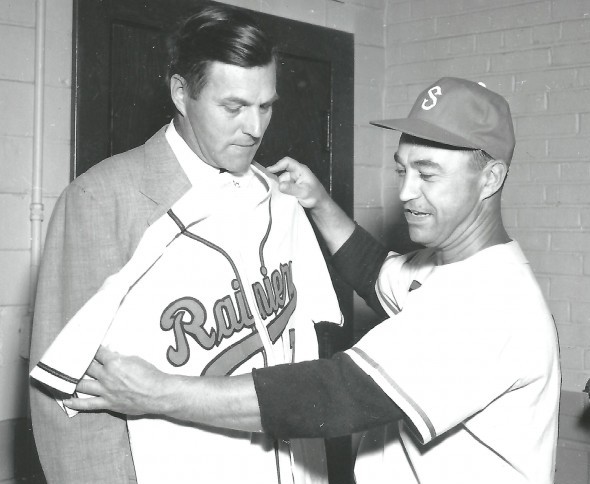
Gyselman joined the Indians on Nov. 12, 1934, via a trade with the Braves, who sent him, Kewpie Barrett and Clarence Pickrel to Seattle for Joe Coscarart.
In 10 consecutive seasons (1935-44) as Seattle’s third baseman, Gyselman played in 1,649, games, collecting 1,762 hits, 300 doubles, and 134 stolen bases. His best batting year occurred in 1938 when he hit .305 with 214 hits, including 53 doubles, six triples and 12 home runs in 175 games.
Gyselman played for the San Diego Padres from 1945 through mid-1947, when the Rainiers reacquired his services. That was his final year in Seattle, and his final year at the AA or AAA level. Gyselman finished his pro career at the C and D levels, played semi-pro ball in western Washington, then went to work for the King County Recreation Department in 1952. He retired as a department supervisor in 1973.
Inducted posthumously into the PCL Hall of Fame in 1993, Gyselman died of bone cancer in Seattle on Sept. 30, 1990, at the age of 82.
7. MIKE HUNT, OF, 1934-39, 3,054 votes
Nothing Hunt did in his career with the Indians and Rainiers pleased the populace more than the events of July 9, 1937 and it had nothing to do with Seattle’s left fielder going 2-for-4 in a 3-1 Rainiers victory over the Sacramento Solons.
That night, in a pre-game ceremony at Civic Stadium, Hunt exchanged wedding vows with Charlotte Pat Axelson in front of an improvised altar near the pitchers mound. The 9,272 assembled made it the highest-attended wedding in Seattle history.
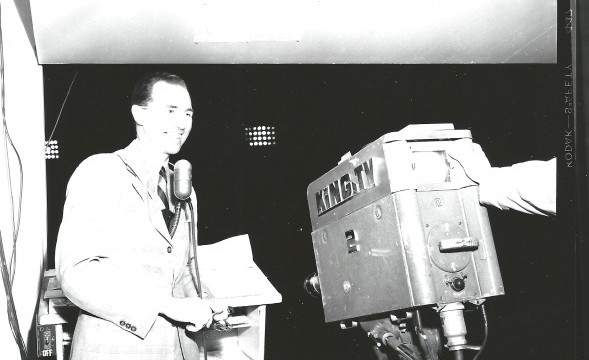
The wedding received more coverage in The Seattle Times (three photos) than the Indians triumph over the Solons, the newspapers society reporter offering these details: Hunt and his groomsmen assembled on the first-base side of the altar before the wedding, the bride and her bridesmaids on the third-base side; Clarence Martin, Washingtons governor, gave away the bride; Hunt wore his baseball uniform, his wife a white dress; after the wedding, Hunt and his Mrs. walked away under an archway of baseball bats.
It was one of the most spectacular weddings in Seattle history, observed Indians broadcaster Leo Lassen.
If Hunts on-field wedding didnt make him one of the most popular player in franchise history, his home runs did. Long before Griffey Jr. pounded majestic shots for the Mariners, Hunt delivered long pokes for the Indians and Rainiers.
Seattles premier slugger of the 1930s, Hunt led the PC in home runs and RBIs in 1936 and 1937 and whacked 124 long balls in a four-year span. He twice led the league in RBIs and batted .331 over 10 PCL seasons.
Born in Santa Clara, CA., Hunt began his pro career in 1927, and was with the San Francisco Seals in 1932 when the team’s center fielder was Joe DiMaggio. Traded to Seattle in 1934, he became one of the key hitters for the Indians, usually batting fourth.
Starting in 1934, Hunt, nicknamed Old Baggy Pants (for wearing his uniform down to his ankles), strung together four consecutive 200-hit seasons. For Seattle, he had a high of 212 (with 30 home runs) in 1936.
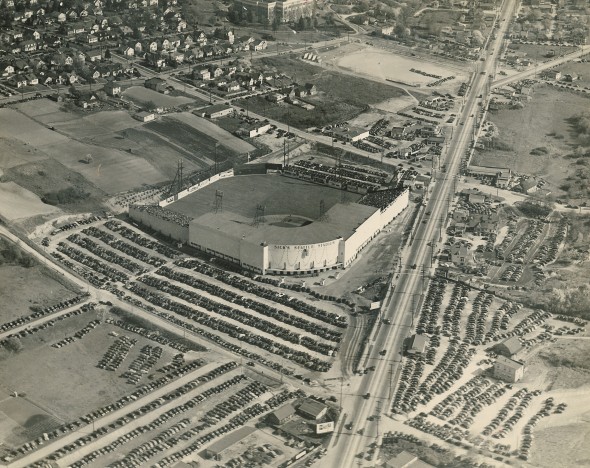
In Hunt’s last season with the Rainiers (1939), the team won the first of three consecutive PCL titles, but his average slipped to .259 and he hit only 15 long balls. When informed by the Rainiers that was being sold to Portland, Hunt refused to report and retired from baseball.
Hunt, who never played in the majors, went to work for the Washington State Patrol following his baseball career, and served on the force for 28 years. He told former Tacoma sports writer Jack Sareault that he had trouble adjusting to work without chewing tobacco.
“The Patrol made me quit chewing tobacco,” Hunt told Sareault. “They didn’t like it when I spit out the window and the wind splattered it on the side of the white truck.”
Hunt died on Nov. 25, 1996 in Federal Way, at age 89, and was buried in Ephrata.
8. BILL SCHUSTER, INF, 1940-41, 49-50, 3,038 votes
Newspaper articles that ran during his playing days cite two explanations for Shusters nickname, Broadway Bill: The expensive clothing he wore, and his theatrics on the field.
Schuster first came to the attention of Rainiers fans in 1940 when manager Jack Lelivelt purchased his rights from the Boston Bees, a forerunner of the Boston, Milwaukee and Atlanta Braves.
Justifying Lelivelts confidence, Schuster not only produced immediate results, but the best season of his pro career, batting .291 with 188 hits, including 31 doubles, for a club that won the second of three straight PCL titles.
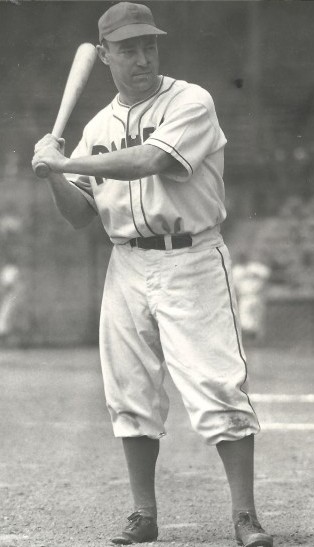
Schuster had two runs in Seattle 1940-41 and 1949-50, 431 games — marked by bursts of humor. Once, after banging a home run in Los Angeles, Schuster, aka, The Rooster, crossed home plate and kissed a blonde woman in the stands. Another time, after an easy-out grounder to first, Schuster veered off course, ran to the pitchers mound, and slid in.
He spent the prime of his career with the Los Angeles Angels (1941-48), and also logged time in 123 major league contests spread over five seasons with the Pirates (1937), Braves (1939) and Cubs (1943-45). Schuster roomed with Honus Wagner as a Pittsburgh rookie.
(Schusters most notable MLB moment occurred on Oct. 8, 1945, when he scored on a Stan Hack double in the 12th inning, giving the Cubs an 8-7 win over the Detroit Tigers in Game 6 of the World Series.)
Following his playing career, Schuster managed the Vancouver Capilanos of the Western International League (1951-52) and also coached in the majors. After baseball, Schuster worked in the press room at The Los Angeles Times and operated a gas station in Woodland Hills, CA.
Schuster, who died on June 28, 1987, in El Monte, CA., at the age of 74, entered the PCL Hall of Fame posthumously in 2006.
9. HAL TURPIN, RHP, 1931-32, 37-45, 2,891 votes
Undistinguished in his early years, Turpin might not have achieved the success he did if he hadnt suffered an arm injury in 1935 that forced him to alter his delivery. Once he adopted a sidearm motion, the fast-working Turpin, one of only a few pitchers to throw a sidearm knuckleball, became a pitcher of prominence, his career taking off after he joined the Indians in 1937.
Turpin went 154-91 in 11 Seattle seasons, won 20 or more games four times (between 1939-42), including a high of 23 three times. Of the three, 23-win efforts, the one that Turpin posted in 1942 may have been his best. That year, Turpin made 32 starts and had 31 complete games.
Turpins most memorable Rainier moment occurred on April 12, 1942, when he came within one pitch throwing a perfect game against San Diego. With two outs in the ninth, he hurled a two-strike fastball past Cedric Durst. Turpin thought he deserved a strike, but the umpire called it a ball and Durst drew a walk. Turpin settled for a no-hitter.
Turpin spent his 20-year pro career in the minors, refusing all overtures to pitch in the majors because he operated a farm in Oregons Willamette Valley and never wanted to stray far from it (he quit the Rainiers midway through the 1943 season to work the farm when a World War II-caused manpower shortage necessitated his presence).
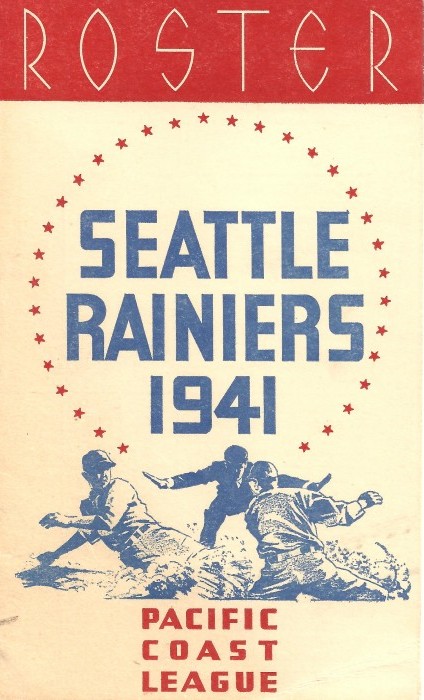
Turpin did not finish his career with the Rainiers. After going 18-8 in 1945, Seattle traded him to Sacramento. He lasted just five games, going 0-3, then retired, devoting the rest of his life to his farm.
During his best years in Seattle, Turpin worked so fast that Emil Sick, the brewery baron who owned the Rainiers, reportedly ordered his managers to make sure Turpin pitched on Sundays, a day Sick was not allowed to sell beer at Sicks Stadium (Turpins quick starts were not as much of a drain on concession sales).
Turpin entered the PCL Hall of Fame posthumously in 2003. He died on Feb. 28, 1997, in Roseburg, OR., at the age of 93.
10. ALAN STRANGE, SS, 1937-39, 1,782 votes
Inky, so nicknamed because of his off-season job as a printers assistant, spent five seasons in the majors and served as a manager and general manager of championship teams in the old Western International League. He concluded his career as the manager of the 1959 Seattle Rainiers.
But Strange is best remembered as the shortstop for the 1939 Rainiers, the team that brought Seattle the first of three PCL titles, and the year he had for that club. He led the 1939 Rainiers with a .335 average, drove in 90 runs, produced 223 hits, and stole 18 bases in 173 games.
“He and Jo-Jo White were one of the best hit-and-run combinations around,” Edo Vanni, right fielder for the 1939-40-41 pennant winners, recalled for the Post-Intelligencer. “He was a good shortstop, good on the double play. He was like a captain on the field. He’d go in and calm the pitchers down. He was very instrumental in that first pennant we won.”
Born in Philadelphia, the 5-9, 162-pound Strange served as a Phillies batboy as a youth and had two stints in the majors. He made his MLB debut on April 17, 1934 with the St. Louis Browns and played in 314 MLB games over five seasons with the Browns (1934-35, 40-42) and Washington Senators (1935), batting just .223. In only one of those seasons did Strange play with regularity: as a 27-year-old rookie in 1934, he saw action in 127 contests.
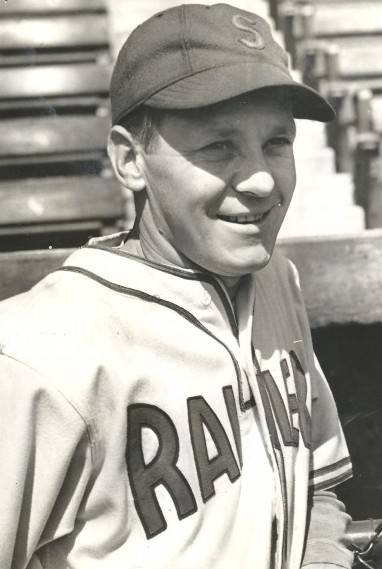
During World War II, Strange toiled in a Seattle shipyard and managed the shipyard’s ballclub. After the war, he became as manager and general manager at Bremerton and Spokane of the Western International League.
Strange returned to the Rainiers as coach for Hutchinson’s 1955 PCL pennant winners. When Hutchinson returned to manage the Rainiers in 1959, Strange followed as coach, taking over as manager at midseason when Hutchinson departed to manage the Reds.
After baseball, Strange worked in the King County auditor’s office for 15 years before retiring. He died in Seattle on June 27, 1994, at the age of 87, and is buried at Calvary Cemetery in Seattle.
JACK LELIVELT, MANAGER, 1938-40, 7,231 votes
In February of 1954, the Rainiers asked fans to vote on the best manager in club history. Fans had several options, including Lelivelt (1938-40), Bill Skiff (1941-46), Jo-Jo White (1946-49), Paul Richards (1950), Rogers Hornsby (1951), and Bill Sweeney (1952-53).
Of the six, only Lelivelt, Skiff and Hornsby managed the Rainiers to PCL titles, and only Lelivelt had done it more than once (Lelivelt assembled the 1941 team for Skiff that won that years title).
Given that Lelivelt, from 1938-40, presided over the greatest era in franchise history, the Roll of Honor vote came as no surprise. Perhaps only the margin did: Lelivelt received 7,231, overwhelming Hornsby, the manager of Seattles 1951 PCL champions, who collected 1,962.
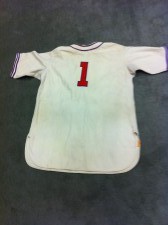
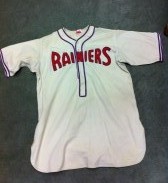
Hired by Sick following a recommendation from Yankees manager Joe McCarthy (a teammate of Lelivelts in the minor leagues), Lelivelt took over Indians team that had gone 81-96 in 1937 and turned the newly christened Rainiers into a second-place, 100-75 club in 1938.
Lelivelts 1939 and 1940 teams went 101-73 and 112-66, respectively, winning PCL titles both years.
Had it not been for Lelivelts sudden death from a heart attack in early 1941, he would have managed three consecutive PCL champions. Instead, Skiff inherited Seattles third title team after replacing Lelivelt.
———————————————–
Check out David Eskenazis Wayback Machine Archive. David can be reached at (206) 441-1900, or at seattlesportshistory@gmail.com

6 Comments
Terrific stuff. Thanks Dave.
Terrific stuff. Thanks Dave.
That’s just what I was afraid of Michael. An award like this almost guarantees a trade, but what the heck, a couple more third or fourth level prospects keeps the tide rolling on the only Major League farm club.
Things are a little different now than they were in 2010, guys. Two years ago, Lee was dealt because everyone knew he was going to be getting a huge contract from someone as a free agent in the offseason, and that he wasn’t interested in signing with Seattle because he saw what a major rebuilding job was there. Zduriencik was still in stockpile mode to rebuild the farm system after Bavasi AND Gillick (loved Pat, but he wasn’t a “build-from-within” GM) had let it deteriorate over the years.
Now, in August 2012, the Mariners have arguably one of the ten best minor league systems in baseball and a daily lineup in Seattle that may be starting to show signs they can play at the MLB level (I won’t get too giddy over a 7-game winning streak at the expense of KC or Toronto, but still…). I know I’M a lot more optimistic about the Mariners’ future than I was two years ago and so is Vargas, who has indicated he’d like to stay.
If I were Zduriencik, I’d make damn sure upper management understands how hard it is to find quality lefty starters just entering their 30’s, especially those who want to be in Seattle, and then make a serious effort to sign Vargas. Winning 30+ games over less than three seasons for a last-place team isn’t easy for anyone not named Felix Hernandez.
Lots of people want to be in Seattle, that does not at all mean they are that interested in winning. In fact, it arguably means closer to the opposite. And I am glad the Mariners have “arguably” one of the ten best farm systems in baseball, thus “arguably” putting them into the mighty top 1/3. And I also am ecstatic over the fact that Vargas is averaging ten wins a season, but I am still trying to keep it a bit in check. We had pitchers on pathetic Mariners’ teams of yore that did better than that. I know, it is hard to pin down exactly which “pathetic Mariners’ teams of yore” I am referring to, as there have been so many. And as for our youngsters, I am not seeing much right now that causes me to think the Mariners are headed toward being a power, or even a playoff contender. That, however, could change. We will have to see how the next two or three managers do with this bunch over the next three to five years. I will say, though, that your optimism is inspiring. I was like that myself up through probably the mid 80’s.
Well, Mike, I guess being optimistic isn’t for everyone.